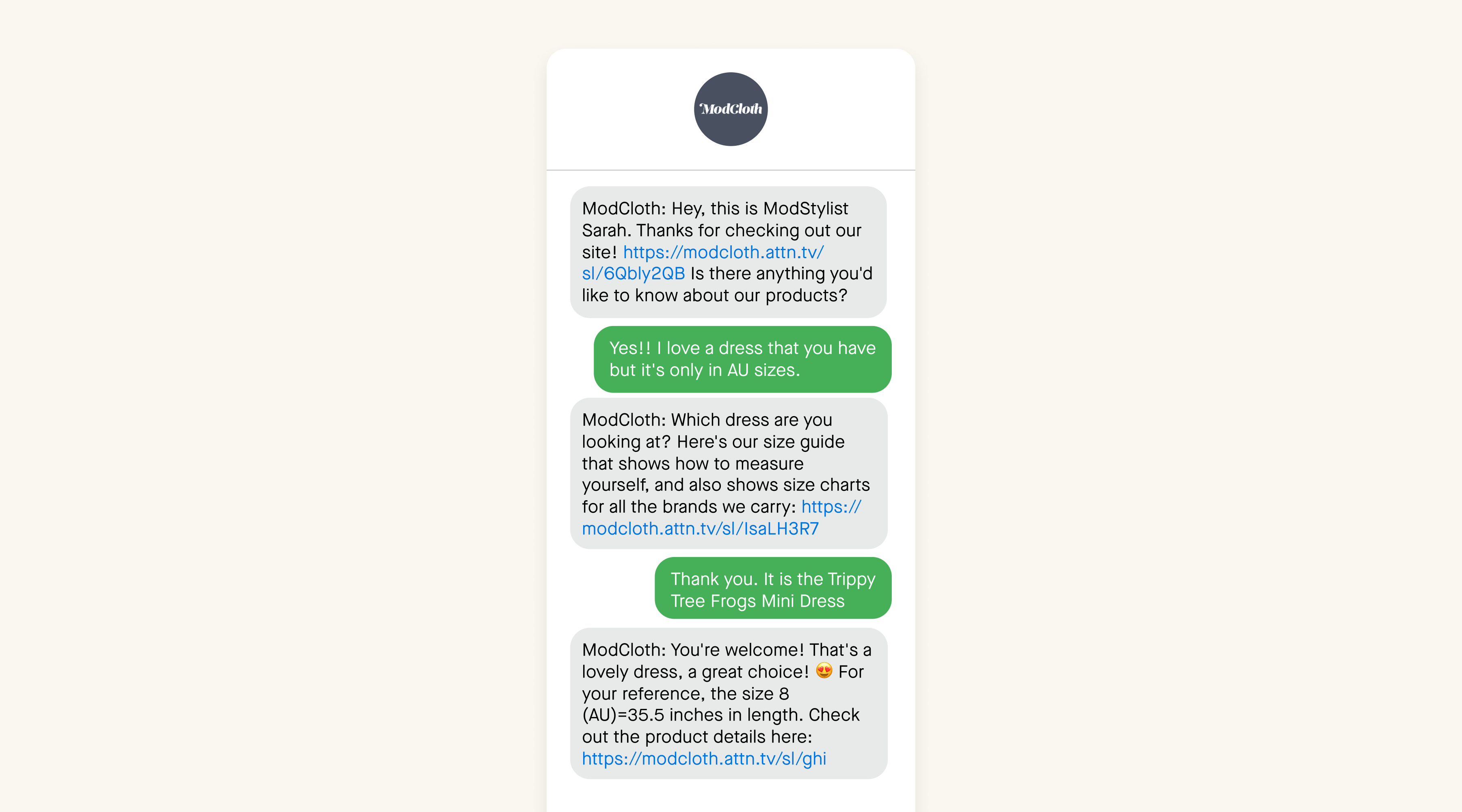
New releases
A smarter, simpler Attentive
Explore new features →
Explore new features →

When we surveyed 8,000 consumers around the world, we found that 88% would strike up a conversation with a brand to learn more about a product, and 80% would ask for a promotion or discount. These conversations aren’t just great for consumers—there's a lot that brands can gain, too. These two-way interactions can help you anticipate customer needs, reduce the risk of returns, and deliver an improved customer service experience (which will influence shoppers to spend more).
We dug deeper into our own product data to learn more about the types of conversations consumers are having with brands—and what they’re speaking about—to help you focus on the most important talking points. We specifically looked at data for Attentive Concierge™, which covers both triggered responses and those escalated to live agents.
If you’re already using Attentive Concierge, you can find all the trending insights via Conversational Insights. Here are some of the highlights, and ways you can turn those conversations into revenue-driving opportunities.
We looked at a 3-month period of data across nearly 600 brands and over 900,000 Attentive Concierge sessions to understand the most popular questions shoppers have asked via conversational SMS. We found that the top 10 topics ranged from product details and information to checkout and payment queries, and returns and exchanges.
These findings align with what consumers told us they want to speak to brands about: Our research found that 88% of global consumers would like to start a conversation with a brand when they have a specific product question, and 87% to resolve an issue with their checkout experience.
The findings from our conversational messaging data give marketers insights into where they can enhance the buying journey, and ultimately, improve their brand’s customer service.

The most frequent topic of conversation is your product catalog, with 29% of inbound messages including product-related questions. Another 9% of questions relate to sizing. Brands can use conversational messaging to address product information gaps online by proactively providing that information via SMS and offer sizing support in both high-tech and low-tech ways, such as sharing access to augmented reality (AR) tools or detailed sizing charts.
Modcloth uses conversational messaging to help shoppers navigate international sizing, sending product-specific information to help them feel confident in their purchase.

Conversational technology can help you drive more conversions and reduce returns. By answering product questions before the customer buys, you can avoid (or overcome) issues that lead to customers returning items—whether related to sizing, functionality, or look and feel.
And that’s a pretty big deal. eMarketer forecasts total retail and e-commerce return volume of $627.34 billion in 2023, a figure equal to 8.5% of overall sales for the year. This is definitely an area where investing in customer engagement during the shopping journey upfront reaps long-term rewards.
Notably, 8% of conversations are related to the checkout process, the very last step in the customer journey. With conversational messaging, brands can answer any final questions or respond to technical checkout issues in real time to make sure a shopper doesn’t walk away empty-handed.
Campus Protein reengages shoppers who have abandoned their cart with conversational messaging, successfully redirecting a would-be customer who couldn’t find their deals back to the webpage they were looking for.

In addition to resolving issues in real time, brands can use conversations to learn why customers drop out of the buying process. By using a solution like Attentive Concierge, you can gather this information directly from customer questions or technical issues they flag that caused them to abandon a shopping experience. For example: You could discover your shoppers are having issues with applying discount codes, or aren’t able to select a certain payment option (such as paying in installments, rather than the full amount upfront). In turn, you can use those insights to improve the buying experience and fix technical issues.
Our data found that many of the conversations consumers are having with brands are related to questions around returning, exchanging, modifying, or canceling an order. Having quick ways to answer these questions comes with two major benefits:

While consumers are driving a lot of innovation in this new era of conversational commerce, it’s a win-win for brands, too. With more data, brands can understand the buyer experience better than ever before, putting marketers in a stronger position to influence the customer experience.
Looking for more ideas to help you use conversational messaging? Check out our conversational content collection, two-way texting best practices, and more real-life examples on Texts We Love.
Methodology note: Attentive internal data was analyzed for a 3-month period (December 2022 to February 2023) across 594 brands and over 900,000 Attentive Concierge sessions.